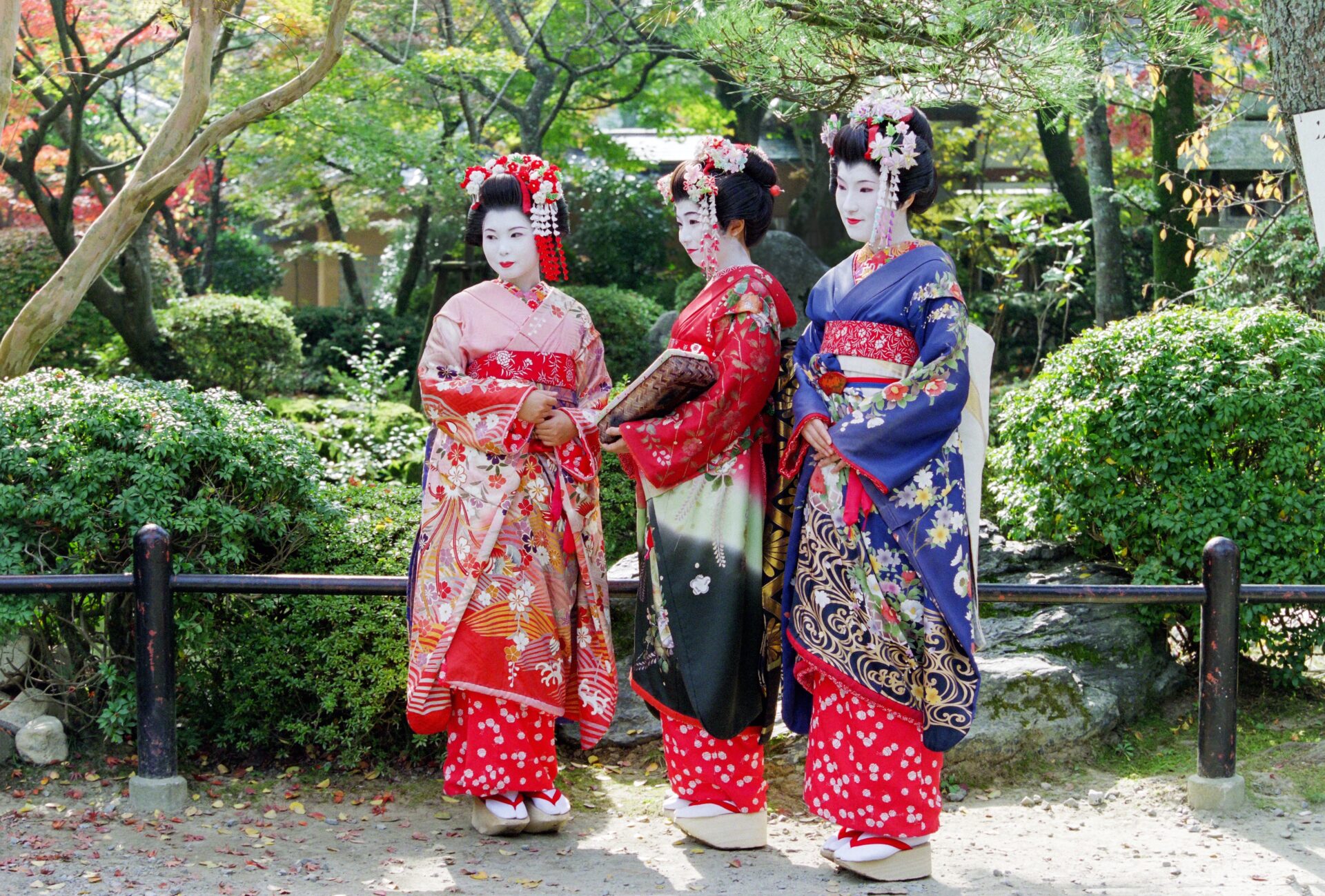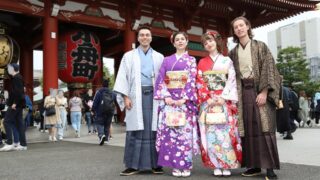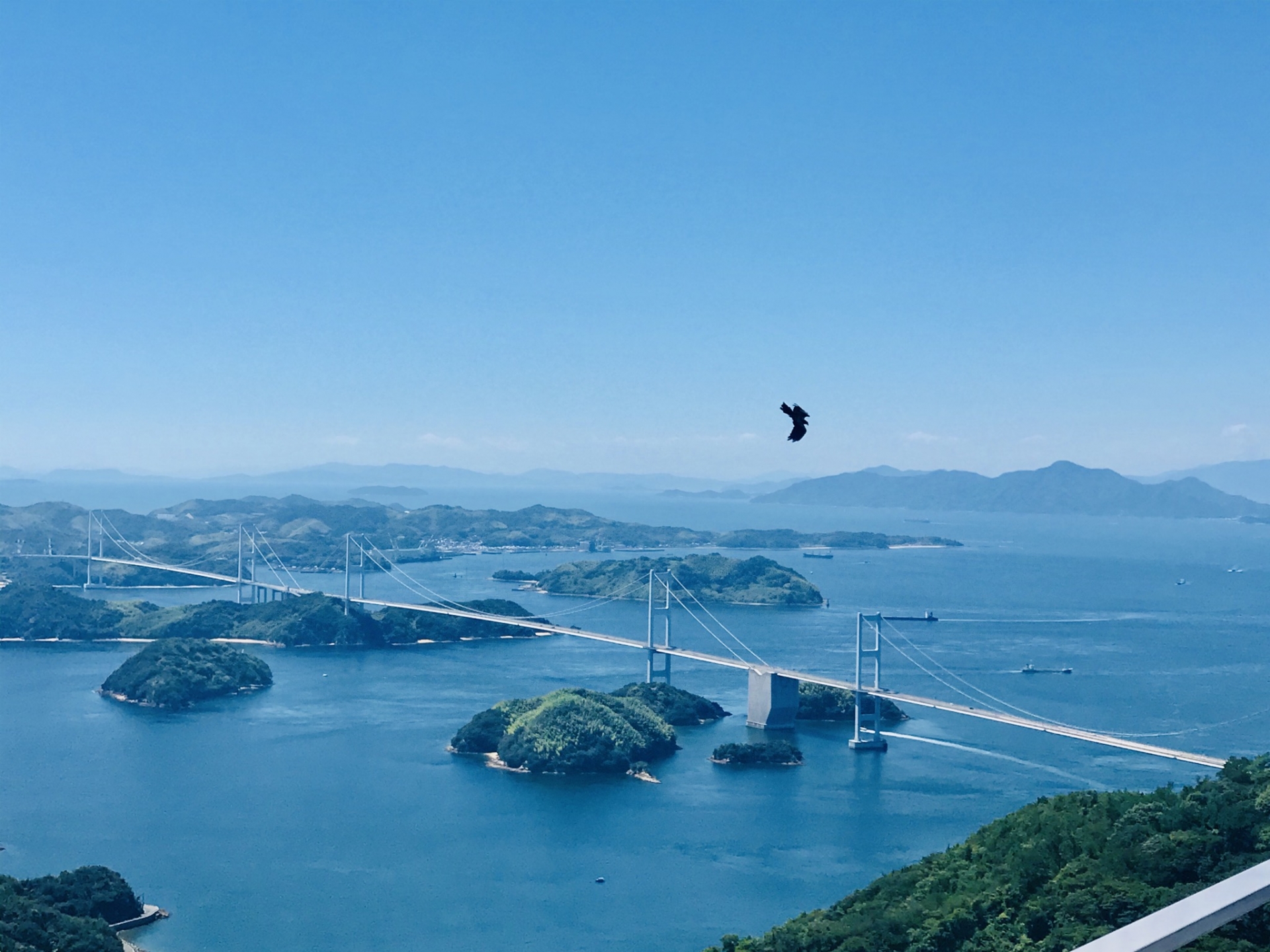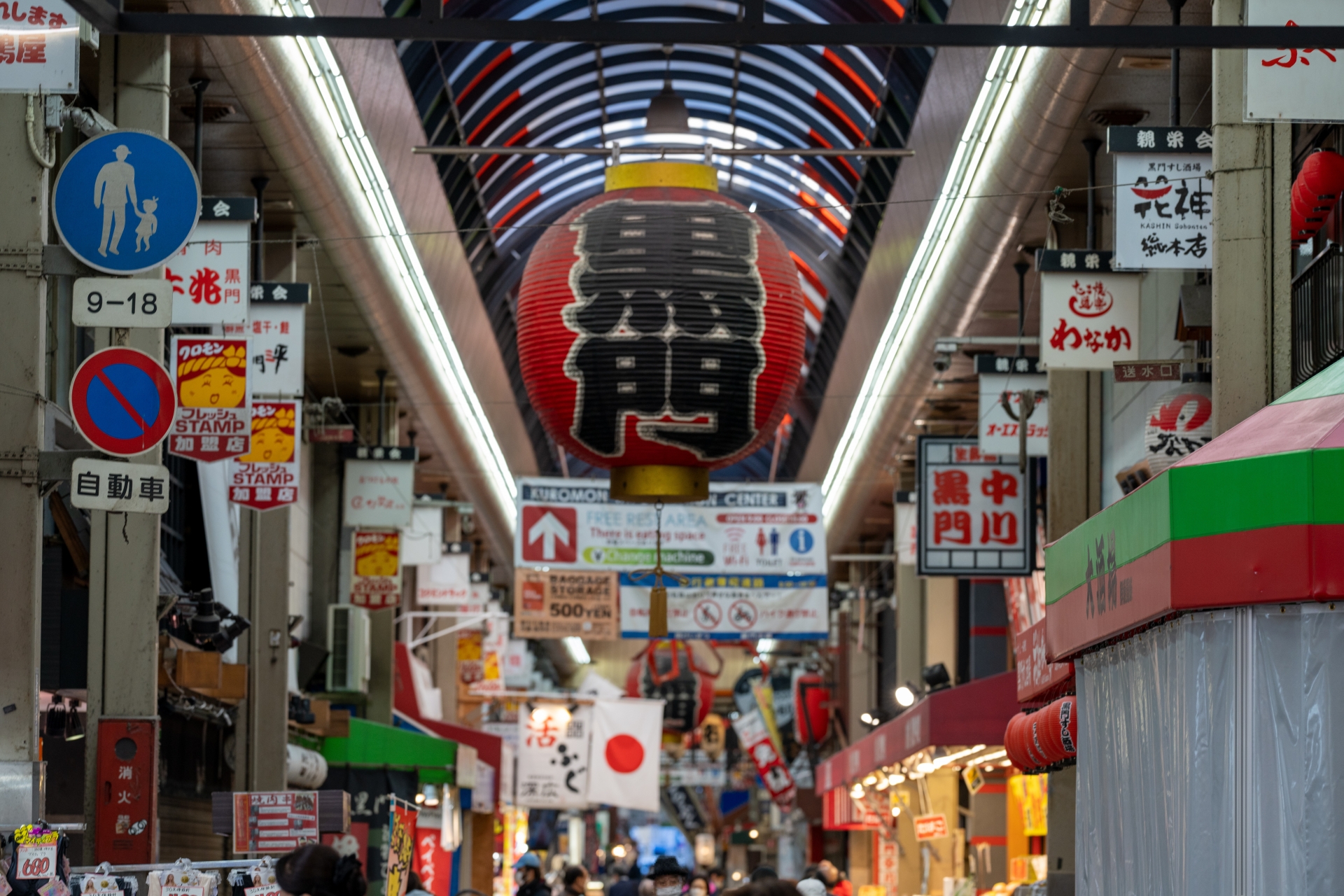
Stefanie Akkerman moved from the Netherlands to Japan in 2013 with her Japanese husband and son. She jumped into the niche of Dutch tour guiding in Tokyo and Kamakura in 2015 and occasionally writes articles about all the great sights and activities Japan has to offer. She loves (Japanese) food, and to work that all off she goes diving, snorkeling, cycling, or hiking.
This post may contain some affiliate links. When you click through and make a purchase we may receive some commission, at no extra cost to you.
Kimono are traditional Japanese clothing, and while they were considered everyday wear during the Edo period, nowadays people in Japan mostly wear kimono only when dressing up for special occasions such as graduating from school, coming of age or when attending a summer festival. Many international tourists like to rent a kimono for a day during their trip to Japan as a way to dive into Japanese culture as well as snap some great photos. But did you know that the patterns on a kimono actually have a meaning? Here is an overview of common kimono patterns and their meanings.
▼Book Kimono Rental plans in Japan here!▼
Official Website: Kimono Rental Wargo
Animals
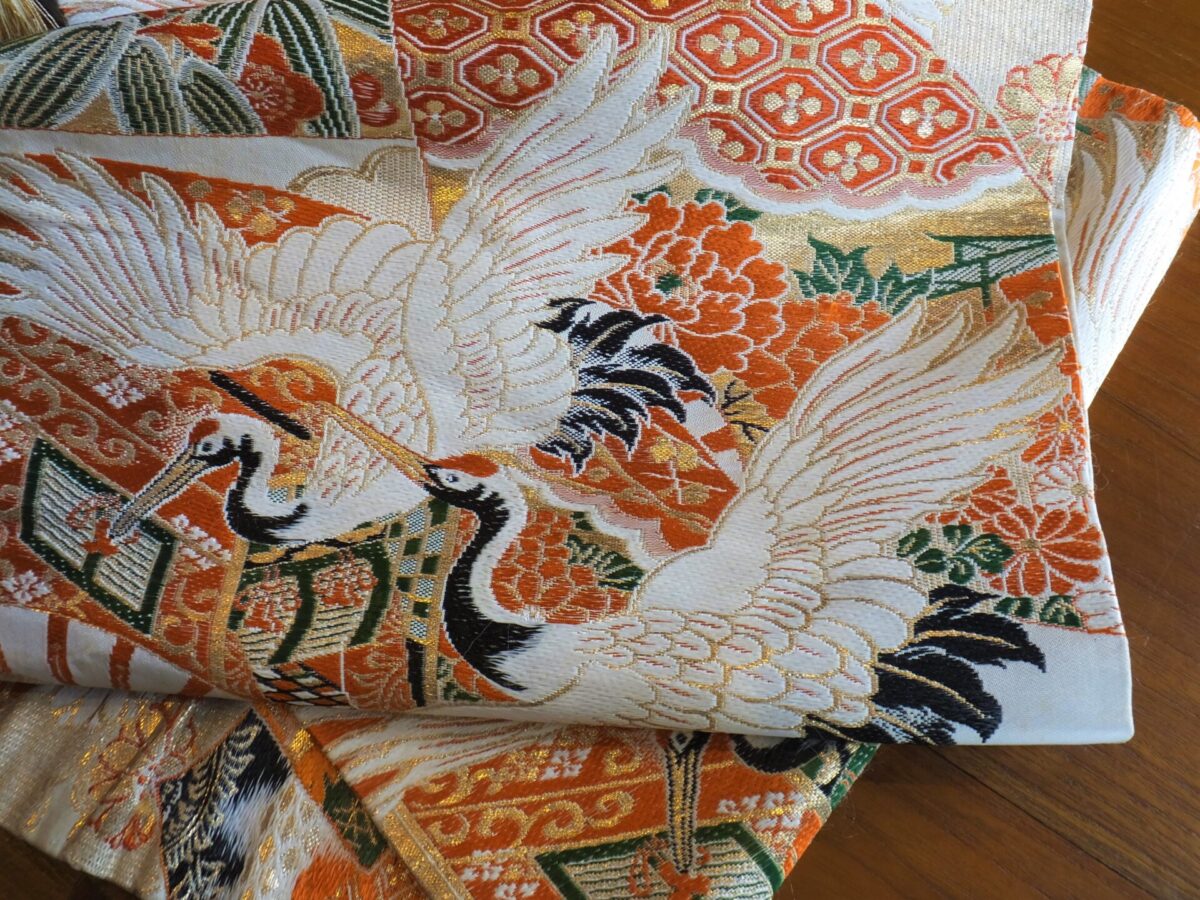
One of the most common types of patterns on kimono is a display of various animals – often birds.
Crane
The elegant tsuru, or crane, is a symbol of longevity because they are believed to live 1000 years and have their home in the immortal plane. Hence, cranes symbolize a long life, good fortune and, if depicted as a pair, a happy marriage. For these reasons, cranes very often appear on wedding kimono.
Houou
The houou is a Chinese phoenix, a mythical golden bird which is seen as an omen of great luck and peace. As peace is necessary for a happy marriage, the houou is often depicted on wedding kimono as well.
Butterflies
When you spot butterflies on a kimono they don’t just represent good fortune, but also hint towards ever-revolving cycles and eternity. Butterflies are also associated with femininity, so you will generally see them depicted only on women’s kimono.
Flowers and Trees
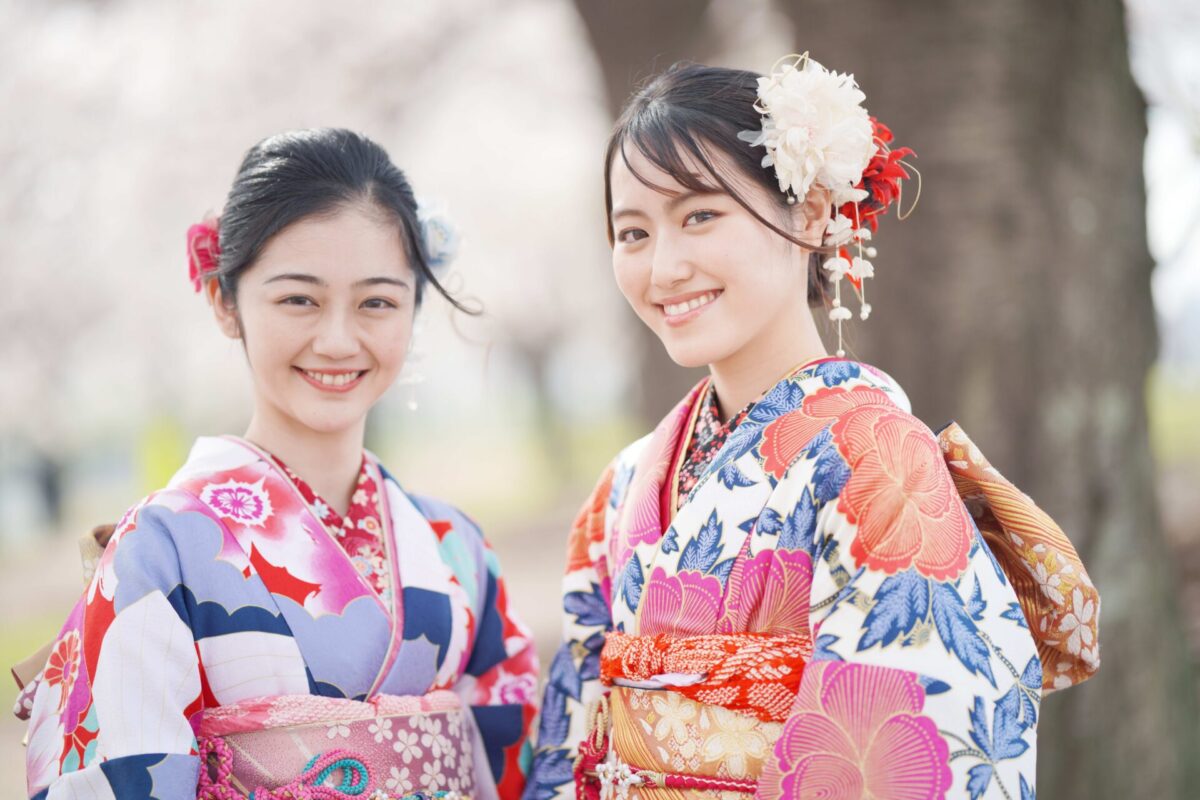
Another pattern that is inspired by nature and often seen in kimono designs are flowers or trees.
Shochikubai
The trinity of shochikubai – or sho, chiku, and bai – translates to pine tree, bamboo and plum. These 3 trees are considered the ‘3 friends of winter’ and they have come to be seen as an auspicious combination. As the pine is evergreen, the plum blossoms in winter and the bamboo grows vigorously, it’s easy to see why they are associated with good fortune.
Cherry Blossoms
The cherry blossom is known to bloom only for a short time but with incredible beauty. The delicate pink flowers are seen as a symbol of new beginnings, beauty and the impermanence of life. Kimono adorned with cherry blossom patterns are often worn during graduation ceremonies and on coming-of-age day due to their association with new beginnings.
Peony
Another flower that can often be spotted on kimono is the peony, a gorgeous flower with large petals also known as the ‘king of flowers’. It symbolizes fortune, nobility, love and ageless beauty, and because the peony blooms so gracefully it’s also a symbol of the fully grown woman, making it a popular pattern for coming-of-age kimono.
Camellia Flower
The tsubaki, or camellia flower, has been popular in kimono patterns since the Edo period. These flowers are seen as a sign of hope since they start blooming in winter as a promise of the spring that is soon to arrive. Red camellia flowers symbolize love while white flowers represent longing or yearning.
Geometrical Patterns
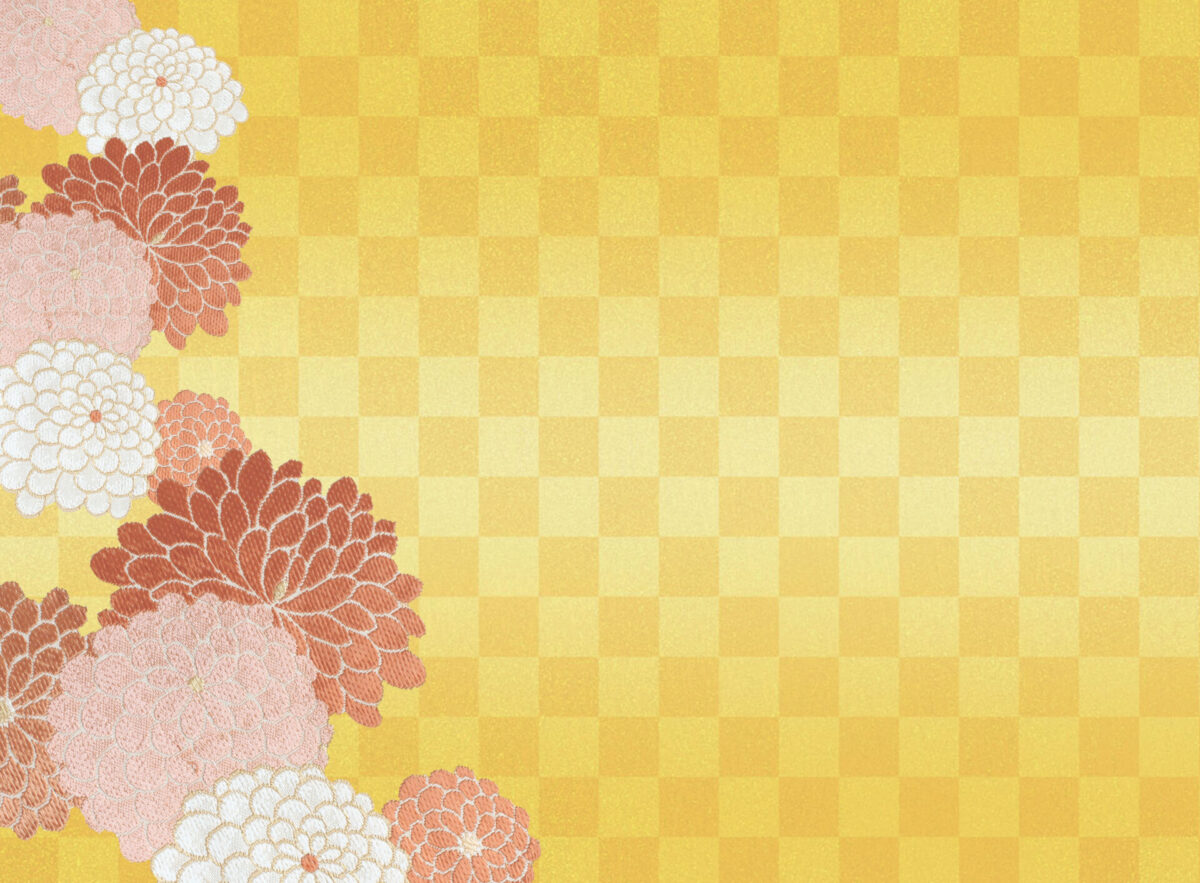
Patterns depicting natural elements often include geometrical patterns as well, and these carry their own meanings.
Ichimatsu Pattern
The ichimatsu pattern is a checked pattern made up of darker and lighter squares that seem to go on endlessly, hinting towards the meaning of this design. The ichimatsu pattern represents the prosperity of the continuing family line and business growth. The name of this pattern derives from a kabuki actor who would wear a kimono displaying the ichimatsu pattern when he performed.
Kikko Pattern
Resembling the shell of a tortoise with its hexagonal shapes, the kikko pattern symbolizes the longevity that these reptiles enjoy. The pattern also looks similar to a samurai’s armor, so the link between hoping for a long life and good fortune for the men defending their masters is also easily made.
Asanoha Pattern
Another common geometrical design on kimono is the asanoha pattern which also contains hexagonal shapes and resembles hemp leaves. It’s a pattern worn during all seasons which stands for protection from evil. Because of its rapid and strong growth, the hemp plant also represents the healthy growth of children.
Ougi Patterns
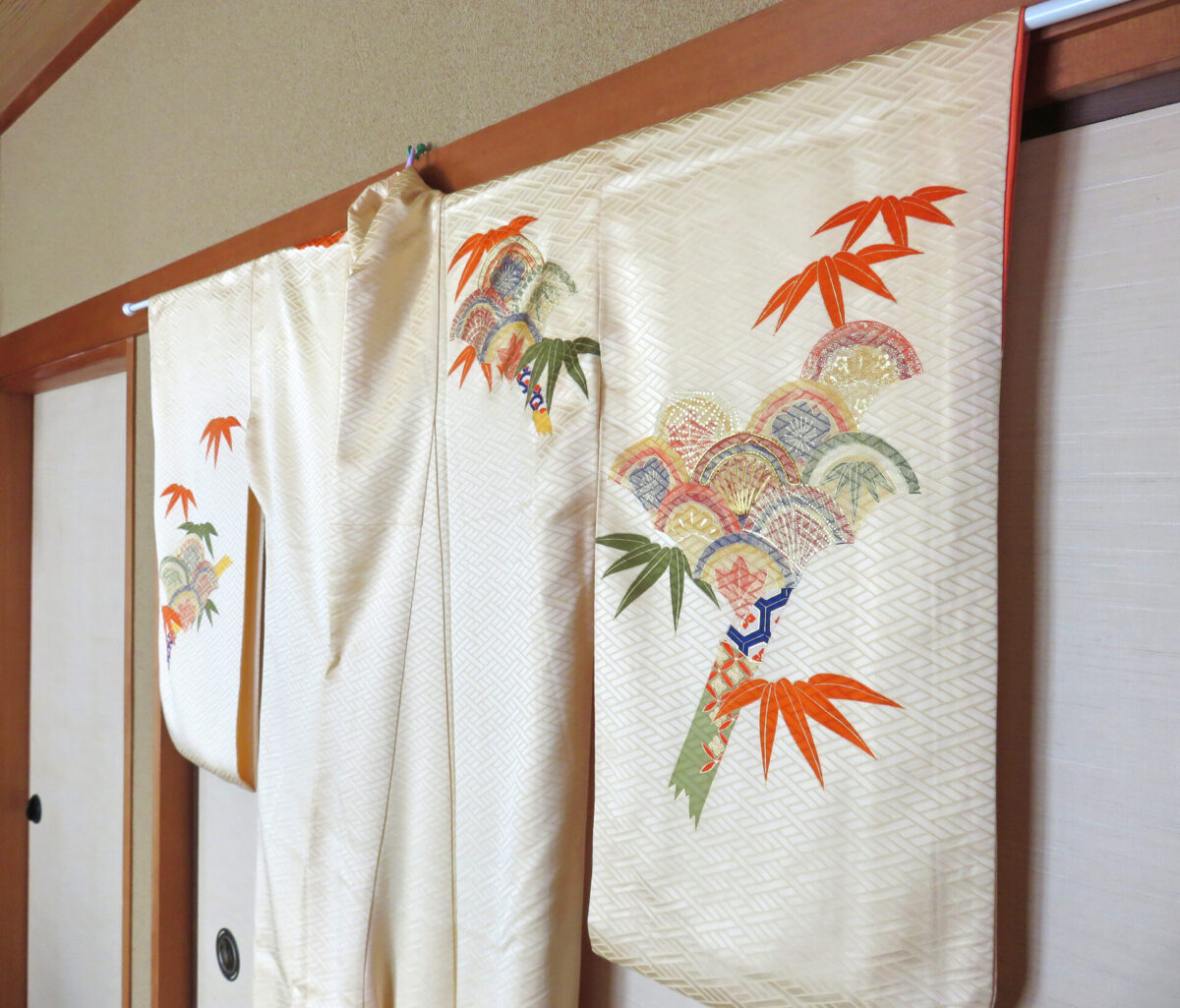
Ougi
Japanese summers have always been very hot, and for centuries people have been cooling themselves down using foldable fans or ougi. Because they fan outward, the ougi represents growing wealth and an increase in luck. Fans are also used to awaken the gods in traditional art forms such as noh (theater) and kagura (sacred Shinto music and dance), and to bring in good luck while keeping evil spirits out. If a fan is depicted as floating in water it refers to an old folk tale in which a person accidentally dropped a fan in a river. The view of the fan floating away was so breathtaking that people started to drop their fans in the stream just to enjoy the beautiful sight.
Kimono are stunning to look at as they are, but if you know the meaning behind their designs they can become even more interesting to admire. If you want to learn more about Japanese culture, history or sites, we highly recommend booking a private tour with a knowledgeable local guide – an experience that will definitely stay with you long after you return home! The itinerary of a private tour can be adjusted to fit your personal interests and allows you to immerse yourself in the wonders of Japan at your own pace. And you will be able to ask any question about Japan that you have always wanted to know the answer to!
We organize private tours in cities like Tokyo, Kyoto, Osaka, Hiroshima and more. Besides private tours we offer fun group tours as well – check out all the tours we have on offer when planning your trip to Japan!
Japan Wonder Travel Tours
Japan Wonder Travel is a travel agency that offers guided tours throughout Japan.
From private walking tours to delicious Food and Drink tours, we can help you organize the best tours just for you! If you want to explore Japan and learn more about the history and backstories of each area you are visiting, our knowledgeable and friendly English speaking guides will happily take you to the best spots!
In addition, we can provide you with any assistance you may need for your upcoming trip to Japan, so please feel free to contact us if yu have any questions or need some help!
▶Tokyo Tsukiji Fish Market Food and Drink Tour
Explore the most lively and popular fish market in Tokyo and try some of the local’s favorite street foods and sake with one of our friendly and knowledgeable English speaking guides!

▶Tokyo 1–Day Highlights Private Walking Tour (8 Hours)
There’s no better way to explore an area than taking a tour with a knowledgeable local guide. You will have the chance to learn about the history and interesting background stories of Tokyo, as well as discover some hidden gems which can be hard to do without a guide.

▶Mt. Fuji Day Trip Bus Tour from Tokyo
Experience the breathtaking views of Mt. Fuji by visiting the highlights of the area on our guided sightseeing bus tour! Departing from Shinjuku in central Tokyo, you can travel comfortably to all of the best spots in the area by bus.

Follow us on Instagram, Facebook, Twitter, and TikTok for more travel inspiration. Or tag us to get featured!
Happy traveling!
